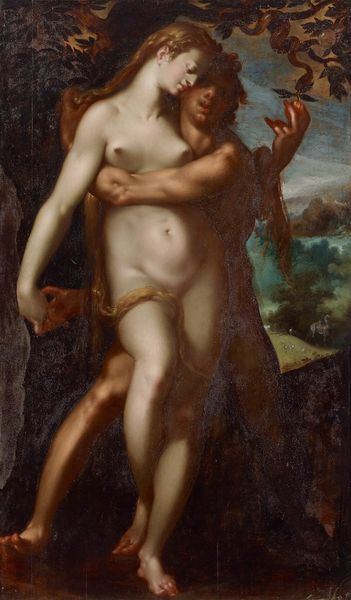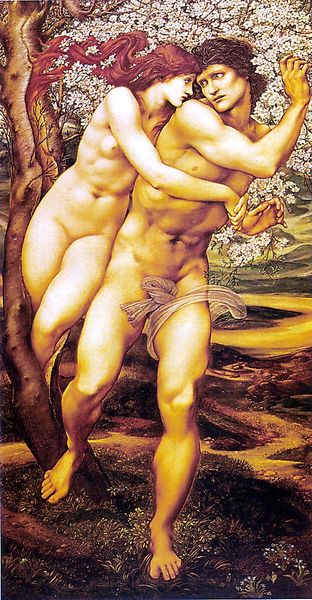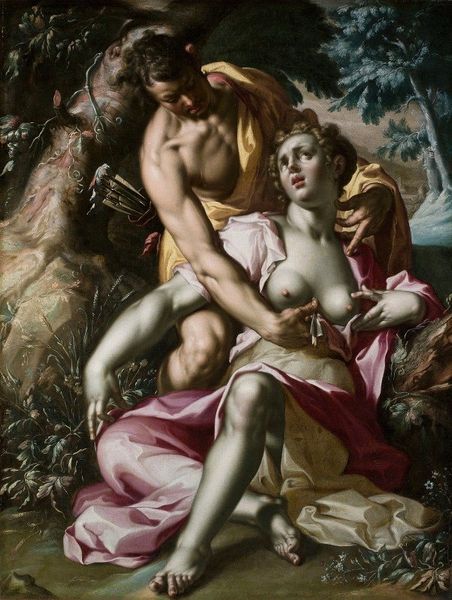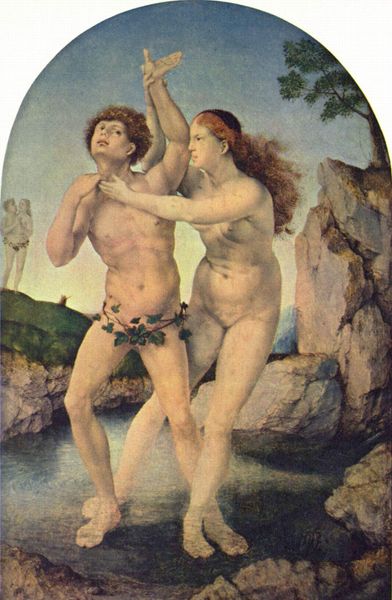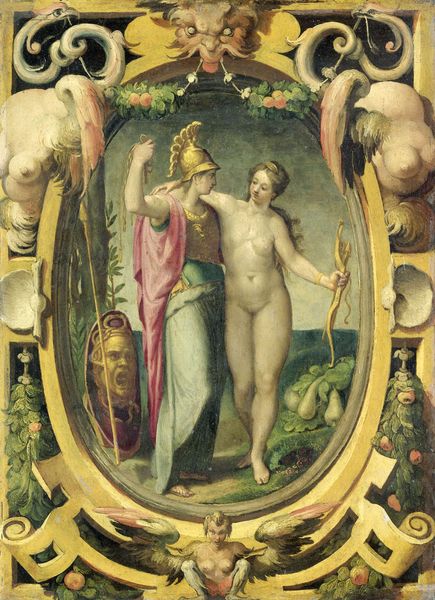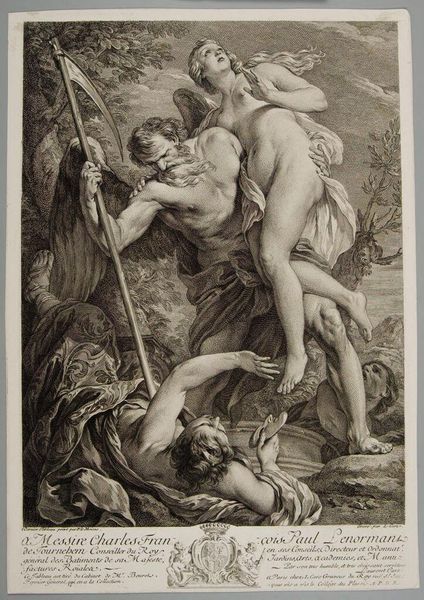
Copyright: Public Domain: Artvee
Edward Burne-Jones painted "Phyllis And Demophoon" in the late 19th century, a time of great social change and artistic experimentation in Britain. Burne-Jones, associated with the Pre-Raphaelite movement, often drew on classical mythology, reframing ancient stories through a Victorian lens. This painting depicts a scene from the myth of Phyllis, who was transformed into an almond tree after her lover, Demophoon, abandoned her. It is a story loaded with themes of love, loss, and transformation. The emotional intensity of the scene is palpable, reflecting the Victorian preoccupation with sentimentality, whilst exploring the complex dynamics between men and women, and how women are portrayed in art. Burne-Jones reimagines the myth with his unique aesthetic, focusing on the ethereal beauty and emotional depth of his subjects. Instead of the almond tree, he depicts the moment when Phyllis clasps onto Demophoon. He challenges traditional representations of women as passive figures, emphasizing instead Phyllis's agency. The painting embodies the Victorian fascination with classical mythology and the Pre-Raphaelite movement's commitment to emotional and aesthetic intensity, prompting us to consider the timeless themes of love, betrayal, and transformation.
Comments
No comments
Be the first to comment and join the conversation on the ultimate creative platform.

